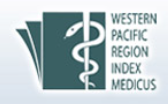Abstract:
Objective To compare the effects of aerobic exercise, resistance training, and a combination of aerobic exercise and resistance training (combined exercise) with dietary restrictions on inflammatory factors and gut microbiota in obese children, so as to provide the reference for improving the health level of obese children. Methods From August to September 2022, a total of 70 obese children aged 10-12 from the Affiliated Experimental Primary School of Minjiang Normal University were recruited through online notifications and WeChat distribution through parent groups. Participants were divided into dietary restriction (DR, n=18) group, aerobic exercise combined with dietary restriction (AE+DR, n=18) group, resistance training combined with dietary restriction (RT+DR, n=17) group and combined exercise combined with dietary restriction (ART+DR, n=17) group, through random number table method. From September to November 2022, each group received different interventions.The daily dietary intake of calories in the DR group was determined according to resting energy consumption. The AE+DR group intervention mainly included skipping rope, aerobics exercises, jogging and sports games, and were maintained for each session lasting 50 minutes. For RT+DR group, the exercise intensity of resistance training was (65%-85%) maximum strength, with a total of 10 actions. The ART+DR group included resistance training (20 minutes), aerobic exercise (20 minutes), preparation and relaxation phases for 5 minutes each. The DR and exercise intervention was administered for 8 weeks (4 times a week for Monday, Tuesday, Thursday and Friday). Before and after different intervention methods, serum inflammatory factors were detected by enzyme-linked immunosorbent assay (ELISA) and intestinal flora was calculated by plate colony counting method. Results Compared to those before intervention, the levels of serum TNF-α, IL-6 and CRP, and the contents of enterococcus and escherichia coli in the faeces significantly decreased, while the contents of lactobacillus and bifidobacterium in the faeces significantly increased after intervention (t=7.19, 7.15, 4.57, 5.42, 5.15, -3.51, -7.30;5.14, 3.64, 3.02, 3.27, 5.00, -3.09, -3.75;7.10, 10.86, 7.74, 10.92, 9.26, -6.63, -6.33, P < 0.05) in AE+DR, RT+DR and ART+DR groups. The levels of serum TNF-α and CRP and enterococcus decreased significantly, and the contents of lactobacillus and bifidobacterium in the faeces increased significantly after intervention (t=2.74, 2.22, 2.14, -2.21, -2.81, P < 0.05) in the DR Group. After 8 weeks of intervention with different methods, the change differences of enterococcus, escherichia coli, lactobacillus, bifidobacterium in the faeces, and serum TNF-α, IL-6 and CRP levels were statistically significantin the four groups of obese children (H=22.22, 23.75, 13.44, 28.33, 18.02, 33.64, 25.14, P < 0.01). In addition, the decreases of enterococcus in the faeces and serum TNF-α, IL-6, CRP levels, and the increases of lactobacillus in the faeces were significantly higher than those in the other three groups. Conclusions Dietary restriction alone or combined with different exercises bring beneficial changes in the inflammatory factors and gut microbiota indicators in obese children. Combined exercise, as well as aerobic exercise combined with dietary restrictions are more reasonable and effective in obese children.











